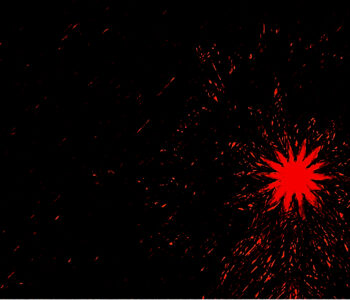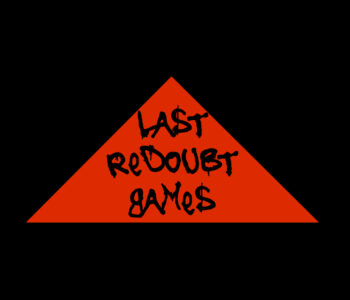To Sail the Crimson Seas…
In a recent post, I talked a bit about the somewhat rocky road I’ve taken to working on publishing my own roleplaying games. One of the chapters in that story was the development of a pirate RPG called Crimson Seas. Yesterday I cobbled together my various design notes and draft text into a single document that can serve as a basis for playtesting. I can’t really say what prompted this effort (and it was an effort, believe me), but I thought it might be worth reviewing how I ended up getting to this point.
Crimson Seas grew out of a short story I wrote called “La Tierra de la Sangre” back in 2006 or so. I can’t remember what prompted me to write a pirate story, exactly. Maybe I was inspired by the pending release of the second and third Pirates of the Caribbean movies. Anyway, the story is an alternate history pulp adventure in which the Aztecs have resisted Spanish conquest and have fought back by constructing massive stone pyramid ships that keep afloat by way of blood sacrifice. I enjoyed the concept so much that I planned to write a series of such stories and use the setting as the basis for a roleplaying game. That didn’t work out so well initially. I started a second story, but never finished it (an exceedingly rare situation for me, by the way). After sketching out some initial ideas for the RPG, I started graduate school and didn’t have the time to devote to it any longer.
I came back to the game shortly after The Walls of Dalgorod was completed. My initial design work got pretty far. I had the basic rules system in place and worked on a prototype game book detailing character options, spells, and an entire miniatures-based ship combat system. But the game only existed in my head. I couldn’t really playtest it in any way. The first big moment came when I tried to run a session at a local gaming convention. After playing around with some pregenerated characters, I realized that the rules system had some crippling flaws that rendered the game almost unplayable. Panicked, I literally rewrote the game overnight, completely overhauling the basic dice mechanics and how characters worked.
In retrospect, I got lucky. The convention wasn’t heavily attended that day and I didn’t have enough people sign up for the game to merit running the session. Thankful for the reprieve, I started working on fleshing the game mechanics out more thoroughly, adding situational rule after situational rule to address every problem that came up.
It was at some point while writing a section of rules to determine the “pull” strength of various sized whirlpools that I realized I’d gone very far afield from the type of game I wanted to make. By that point, I was playing and reading more games than when I started the design process. Crimson Seas was supposed to have been a “simple” or “rules lite” game, but somewhere along the line it had transformed into a crunch-heavy monster, with rule after rule after rule for every possible scenario players might encounter. After all that work, I’d created exactly the sort of game I hated to run as a gamemaster.
In a flurry of frustration and minimalist inspiration, I scrapped everything and threw the few aspects of the game I thought were worth saving into a series of redesigned character sheets. While I’m not particularly fond of the Apocalypse World rules system, I love that game’s approach to character sheets. “Powered by the Apocalypse” games put all of your character creation decisions on the sheet. When you start a game, you look at a series of options for your character, make a few choices, and you’re ready to play. The new Crimson Seas sheets followed this design mandate, discarding the game’s original “classless” character creation system for a more rigid, but still flexible Role system that slotted characters into a series of specific archetypes that made sense for an open seas piracy game. I was really happy with the way they turned out and I felt like I’d solved a huge conceptual problem with the game.
So naturally, I set the sheets aside and didn’t work on the game in any serious way for two years.
Even as recently as a week ago, the idea of dragging Crimson Seas out of mothballs and working on it again seemed unlikely. I can’t really explain why I started looking at the files again yesterday other than I hate to let hard work go to waste. Looking through the prototype game text, I’d forgotten just how much I’d actually finished. I started sifting through files and thinking about how they would mesh with the most recent rendition of the rules. At some point over the last year or so, I wrote up some very basic outlines of a new dice mechanic that I felt had some promise. While the old rules went in a very simulationist direction, the core ideas behind them were always very simple, so a lot of what I’d written could be brought into line with the new system. A lot of what I wrote back then had to be scrapped, of course. At one point, I caught myself trying to adapt some old mechanics to the new system and had to ruthlessly delete things to avoid going down that road to needless complexity again.
The game still has a long way to go. It’s in a very liminal state now, with some aspects that are very well developed and other core mechanics existing in very abstract, untested form. As a far more ambitious game than Hounds of the Tsar, Crimson Seas will require a lot of playtesting and refinement to get it closer to a polished, publication-worthy state. I think it can get there, and I’m still intrigued enough by the setting and the spirit of the rules system to want to guide it through that development process.
In any case, it will be fun to see where the game ends up after its already lengthy voyage.









